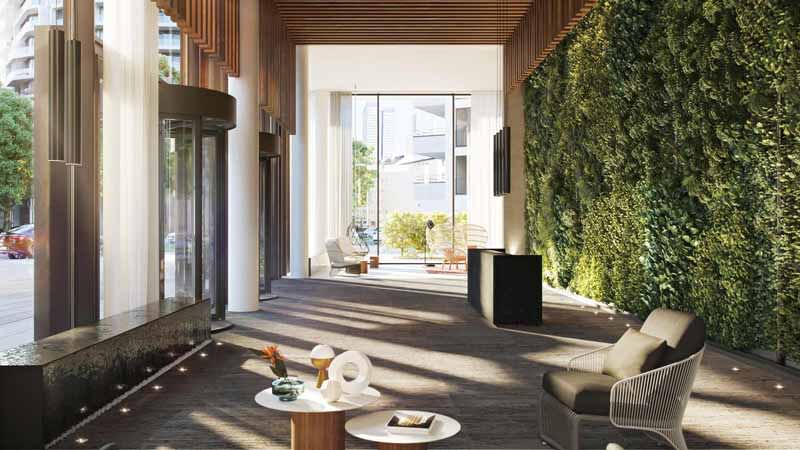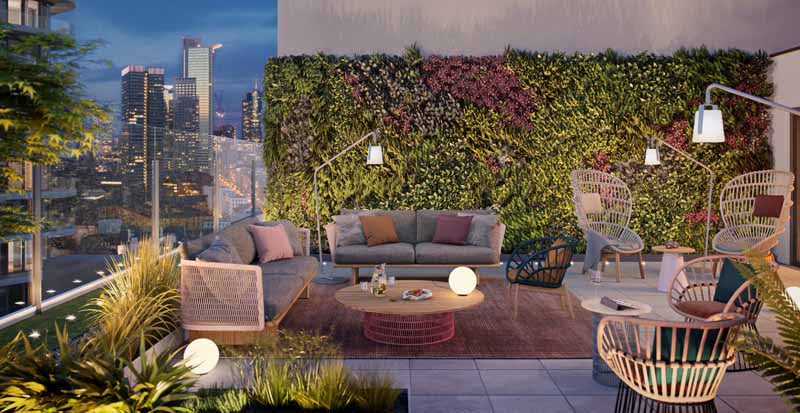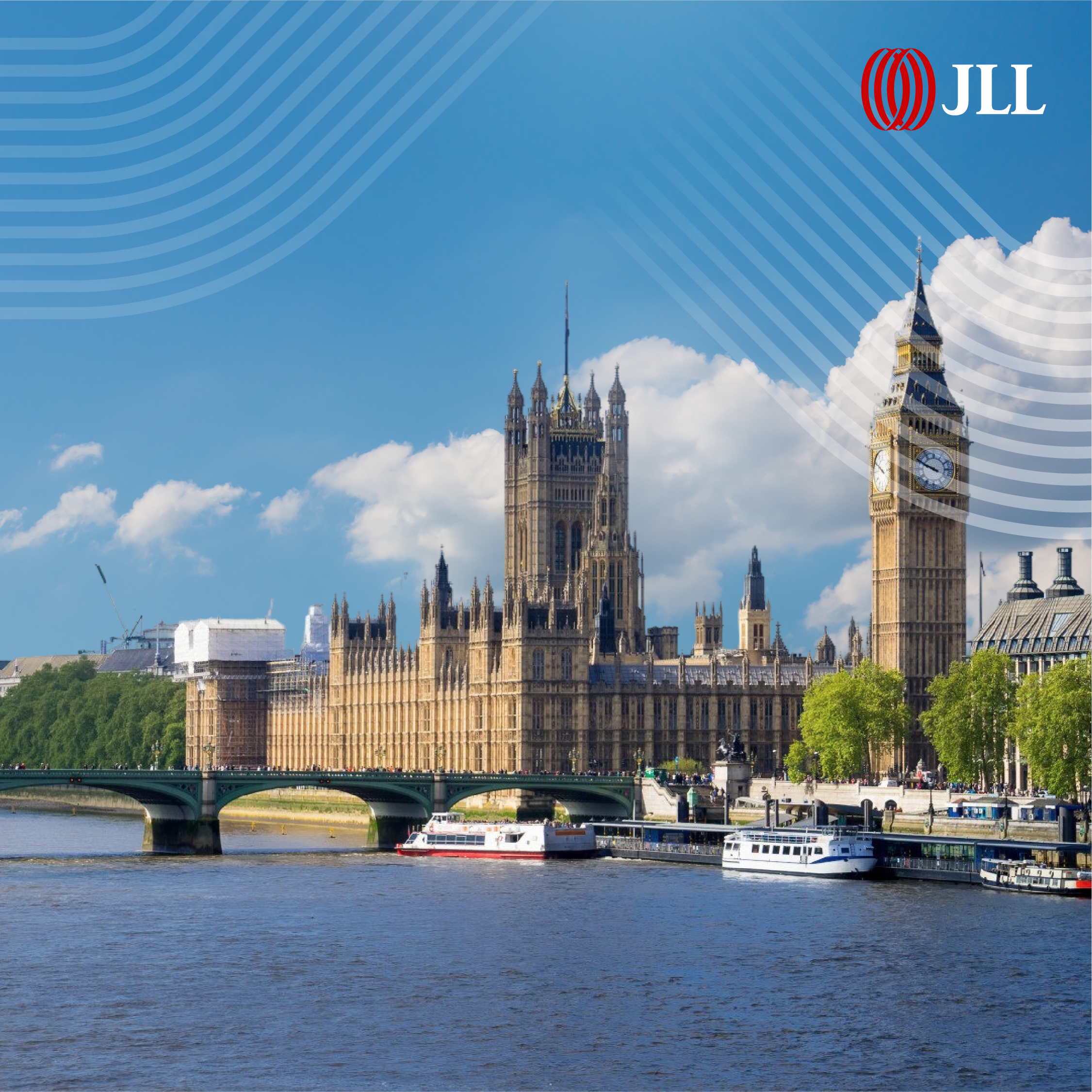Aerial view of Eden in Frankfurt, Artist Impression
Consumer tastes have shifted and the average person now wants more than just a home; they want a healthy and attractive living environment. In Singapore it is common to allocate a plot of land for a communal ground garden but this could be costly in terms of maintenance, watering, trimming and labor.
So, is there a better option?
Living walls, also known as vertical gardens, have been a feature in hotel lobbies, office foyers, and shopping centers around the world for some time.
There has been a noticeable growth in the popularity of indoor living walls as numerous housing projects around the globe now strive to have an aspect of horticulture.
But a complete high-rise residential building with a green living facade?
A vertical garden, green wall or moss wall are pretty much the same thing – plants that grow on a vertically suspended panel by using hydroponics.
These unique structures can either be freestanding or attached to a wall.
They’re useful as well. Exterior vertical gardens cools buildings, they take up less space than a normal garden, and they help to remove carbon dioxide while clearing the air of man-made pollution such as motor vehicles and factory fumes.
A fact well established is that of horticultural therapy - contact with nature improves the mental and physical health of individuals and communities, which should be especially soothing after a draining and demanding day.
They even extend the life of a building’s façade! These numerous advantages increase the overall value of the property.
The Tallest Vertical Garden in the World
A prime example of vertical gardens tying into condominium projects is Frankfurt’s EDEN. Jointly designed by Helmut Jahn from Chicago and Magnus Kaminiarz & Cie from Frankfurt, the 27-story EDEN residential tower fits in perfectly with the city’s green philosophy and the facts speak for themselves: EDEN will feature a total of 186,000 plants over an area of almost 2,000 sqm (as 20% of the façade).
Most of the plants will be planted on the building’s exterior facade, creating a striking and highly visible green wall that is sure to amaze passers-by and visitors to EDEN. In the lobby, a 37 sqm living wall will create the feeling of an urban jungle in the heart of the city.

Eden Lobby, Artist Impression
According to Christiaan Bakker, specialist for green exterior wall systems at Sempergreen, the 98-meter EDEN residential tower in Frankfurt will be the first 70-meter-plus building in the world with a green facade.
Automated and Efficient Technology
When it comes to looking after the plants, vertical garden experts have developed efficient solutions in recent years.
Tending to the plants’ needs is now largely handled by automatic systems: Irrigation and nutrients are supplied with the aid of small drip lines and an irrigation computer. The plants can be monitored around the clock from an off-site control center.
The technological sophistication of the system is certainly impressive. Christiaan Bakker explains:
“The irrigation system installed on the roof automatically supplies water and fertilizer to the plants for a few seconds at a time. At night, the system pauses because the plants rest. Sensors in the panels monitor moisture levels and allow us to check fill levels via computer.”
The vertical gardens even have their own frost protection system. As soon as there is a risk of frost, the system switches itself off and ensures that the water drains off before it can freeze in the pipes.

Balcony in EDEN, Artist Impression
Creating Green Urban Spaces
With such a truly innovative project as EDEN, it was important that the architects and green facade specialists worked in perfect partnership.
The considerable weight of the planting system, the complex network of water pipes and the space for drainage all needed to be expertly integrated into the building’s planning from day one.
In addition, the plants are chosen with the utmost care. In the case of EDEN, the plants are individually selected for the project and planted a year in advance on precision engineered panels before being attached to the building with the help of a gondola.
“Given the height of the building, the installation is of course more time-consuming than with other green facades,” explains Bakker.
EDEN is truly a project of superlatives. For the green facade specialists at Sempergreen, the vertical gardens are more than just a business:
“Our cities are growing and we need to make more space for greenery. Vertical gardens are an ideal, and very necessary, solution as we seek to create more green spaces!”
Frankfurt: metropolitan vibe in harmony with green serenity
There is hardly another city in the world so perfectly suited to the combination of vertical gardens and high-rise architecture than Frankfurt.
The metropolis on the Main River is rightly famous for its exciting skyline. Urban greenery is also deeply rooted in the city’s DNA – in the truest sense of the word.
One of Frankfurt’s preeminent garden architects, Franz Heinrich Siesmayer, created the famous Palmengarten 200 years ago. In total, he is credited with having designed and landscaped more than 300 parks.
Greenery has always played an important role in Frankfurt’s urban planning: the miles of green belt running around the city’s core and more than 40 urban parks make a valuable contribution to creating a balanced urban climate. More than 52% of the city’s urban area is green.

EDEN, Frankfurt. Artist Impression
Find out more about EDEN by clicking here.



